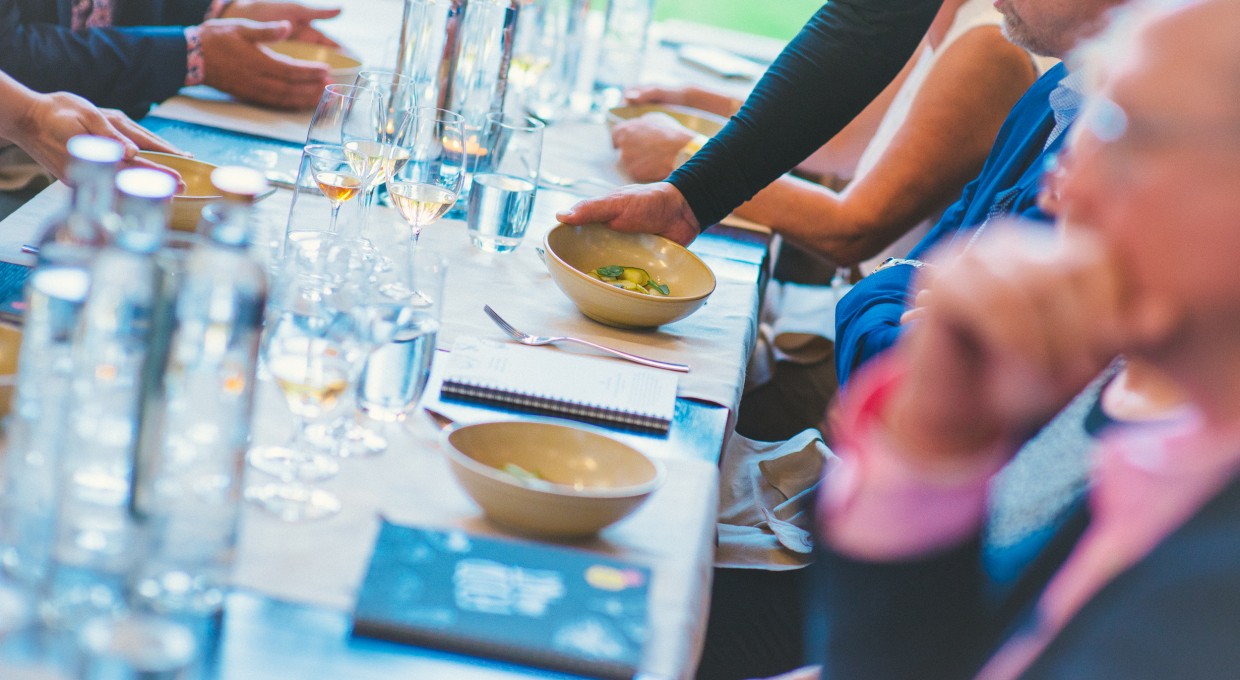Water and its place on the dining table: Why does the choice of water matter?VEEN Scene 001

You have to feel sorry for water; it’s the single most important element for sustaining human, animal and plant life on this planet, and yet most of us take it for granted. While we spend valuable time deliberating over what we eat, where it comes from, how it was made and what it tastes like, we give considerably less thought to the water that’s served with our meals.
Not only does water provide some of the minerals vital for a balanced and healthy diet – calcium, magnesium, potassium and sodium, to name a few – it’s subtle characteristics also add nuance to the dining experience. Depending on the source and provenance of the water, which affects the minerality (the total dissolved solids) and the bubbles, water can be pure and perfectly still, or mineral rich and violently bubbly.
“Water doesn’t come out of the tap, it comes from natural places: icebergs, rain, artesian water, spring water and glacier water. Those places have different geology, and the geology influences what the water tastes like,” says water expert Michael Mascha, author of ‘Fine Waters: A Connoisseur’s Guide to Premium Waters’, whose life was changed when he had to stop drinking wine in 2002.
“I noticed that I was not so much missing the alcohol, I was missing the wine bottle on the table as an element that allows you to understand something and learn something; to share something with friends. I said hey, what about if we apply some of the same principals that I know from the wine to the water.”
And so began the journey from wine connoisseur to water guru.
We all remember learning about the water cycle at school. Water evaporates, rises into the atmosphere and gathers in the form of clouds, before condensing and falling to the earth as rain, hail or snow. When it reaches the earth, water can run off the surface directly into rivers, lakes and oceans, or it can filter through the ground until it ends up in aquifers; a process that can take anything from 30 days to thousands of years. Sometimes snow falls onto glaciers or icebergs in polar regions, where it can be entombed for millennia.
The journey the water takes affects its chemical make-up, which is why water can be packed with minerals, or it can be (literally) pure as the driven snow, i.e. mostly free from mineral content.
It’s these characteristics that have made water a powerful tool for the food and beverage industry, from chefs and restaurateurs to chocolate makers, mixologists and water sommeliers like Martin Riese.
“Water is not just water,” says Riese, who stocks some 20 different types of H20 at his LA bar Ray’s & Stark, and has carved out a niche as one of a handful of water experts around the world.
“You can pair water like wine,” he explains. “A water with a low minerality fits perfectly with Riesling wines or salads with vinegar dressings. The smooth taste of the low mineral water will balance out the acidic notes of both. On the other hand, a water with a high minerality is perfect to pair with BBQ. The slightly salty notes of the water will match the rich flavours of the meat and sausages.”
But the big difference between pairing food with wine and pairing it with water is that while different varieties of water can balance out the flavours of food – salty, sweet, sour, bitter or spicy – it never detracts from its flavour.

Michael Mascha, who works with chefs and restaurateurs around the world, says that chefs are increasingly fond of serving food with water pairings and leaving out the wine, so diners experience the full flavour of their cooking as intended.
But that’s not to say that water cannot be paired in innovative ways that can enhance the overall dining experience: “Take a really crispy fried oyster,” he explains. “The chef or sommelier can do two things: they can say, I want the bubbles in the water to be very fine, so they are not distracting from the mouth-feel of the oyster, or they can decide to move that whole experience over the top, giving [the diner] not only the crunchy oyster, but also the big bubbles.”
“I’m not saying either is right or wrong, but by paying attention and playing around with it, you now have a toolkit to enhance your epicurean experience with the water.”
When you start to consider how the properties of drinking water affect the food served with it, it’s only a short leap to think about the way water affects foods when its used as ingredient, such as in dishes like soups, broths and sauces. Take this thinking behind the bar and you’ll realise that water used in ice cubes can affect the taste of a cocktail: just think about all the ice melted into a martini or an old fashioned.
Armed with this new way of thinking about water, consumers have the chance to open up a new world of culinary exploration. We’re not all going to become connoisseurs overnight, but if we take the advice shared by these two experts and taste several different bottles of natural spring water side by side, and see how they complement or contrast with the food we eat, it’s possible that we can all start using water to add a little more magic to the meal table.